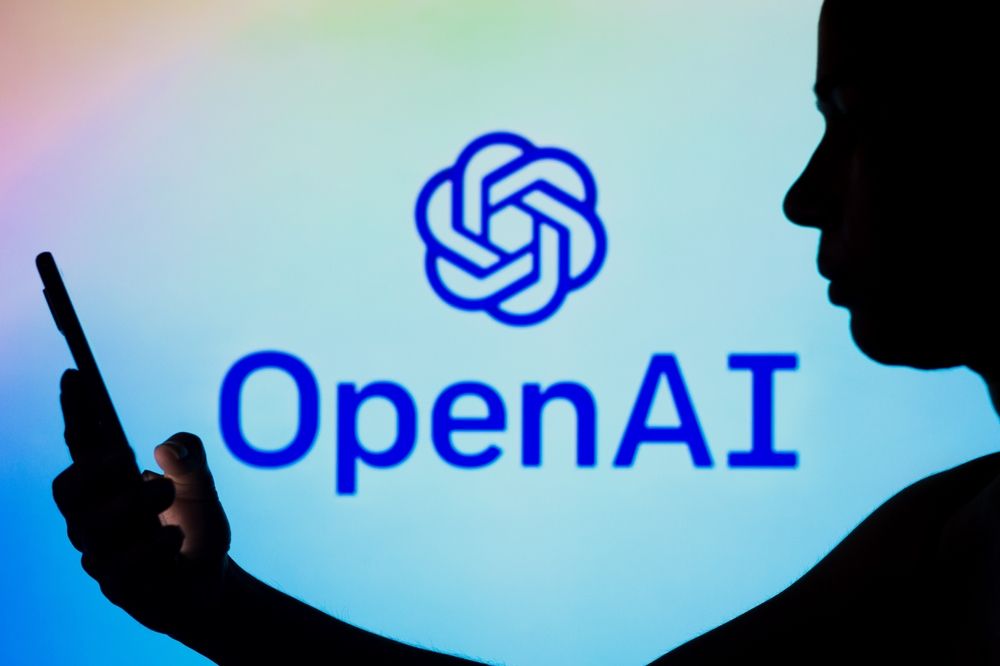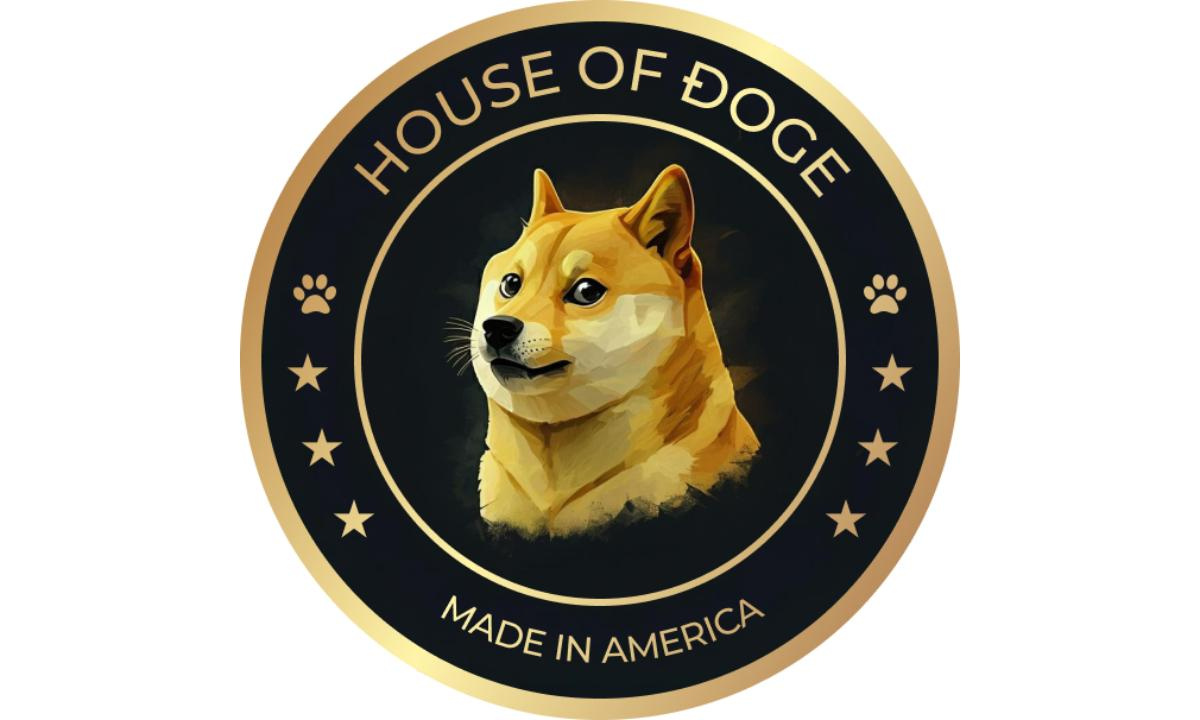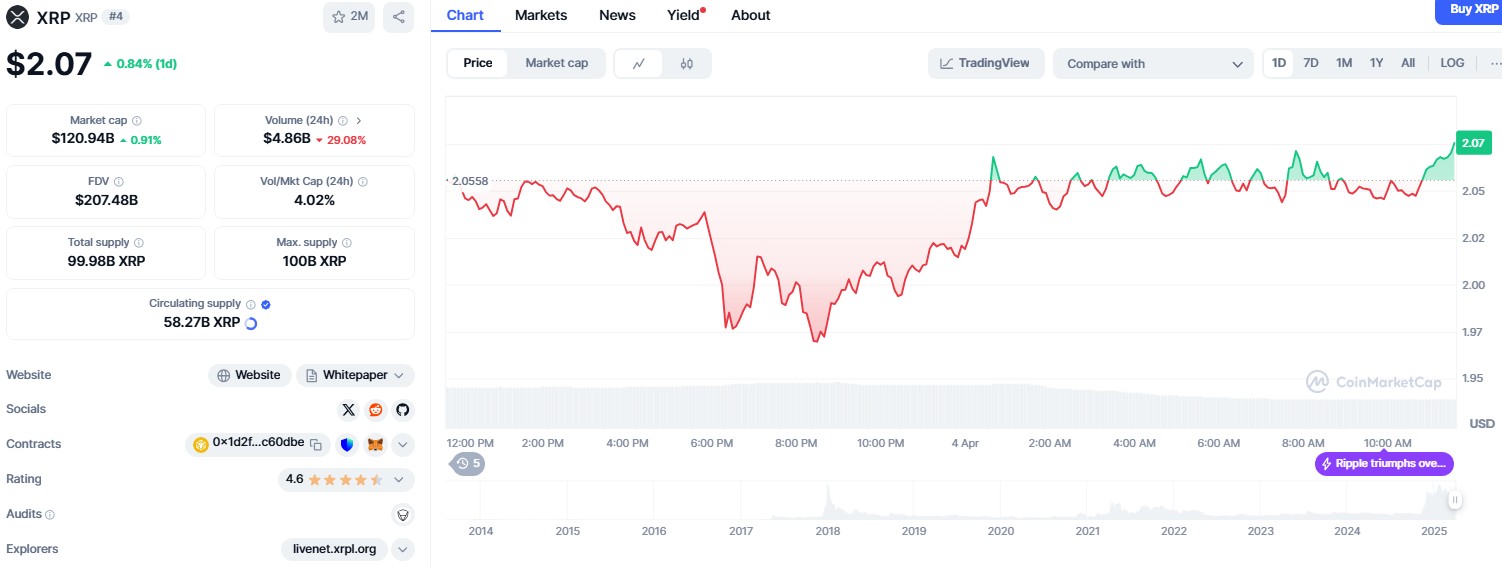Agentic GraphRAG for Commercial Contracts
Structuring legal information as a knowledge graph to increase the answer accuracy using a LangGraph agent The post Agentic GraphRAG for Commercial Contracts appeared first on Towards Data Science.

In this post, we’ll explore how we can streamline the process of understanding and working with legal contracts by implementing an end-to-end solution using Agentic Graphrag. I see GraphRAG as an umbrella term for any method that retrieves or reasons over information stored in a knowledge graph, enabling more structured and context-aware responses.
By structuring legal contracts into a knowledge graph in Neo4j, we can create a powerful repository of information that’s easy to query and analyze. From there, we’ll build a LangGraph agent that allows users to ask specific questions about the contracts, making it possible to rapidly uncover new insights.

The code is available in this GitHub repository.
Why structuring data matters
Some domains work well with naive RAG, but legal contracts present unique challenges.

As shown in the image, relying solely on a vector index to retrieve relevant chunks can introduce risks, such as pulling information from irrelevant contracts. This is because legal language is highly structured, and similar wording across different agreements can lead to incorrect or misleading retrieval. These limitations highlight the need for a more structured approach, such as GraphRAG, to ensure precise and context-aware retrieval.
To implement GraphRAG, we first need to construct a knowledge graph.

To build a knowledge graph for legal contracts, we need a way to extract structured information from documents and store it alongside the raw text. An LLM can help by reading through contracts and identifying key details such as parties, dates, contract types, and important clauses. Instead of treating the contract as just a block of text, we break it down into structured components that reflect its underlying legal meaning. For example, an LLM can recognize that “ACME Inc. agrees to pay $10,000 per month starting January 1, 2024” contains both a payment obligation and a start date, which we can then store in a structured format.
Once we have this structured data, we store it in a knowledge graph, where entities like companies, agreements, and clauses are represented as represented along with their relationships. The unstructured text remains available, but now we can use the structured layer to refine our searches and make retrieval far more precise. Instead of just fetching the most relevant text chunks, we can filter contracts based on their attributes. This means we can answer questions that naive RAG would struggle with, such as how many contracts were signed last month or whether we have any active agreements with a specific company. These questions require aggregation and filtering, which isn’t possible with standard vector-based retrieval alone.
By combining structured and unstructured data, we also make retrieval more context-aware. If a user asks about a contract’s payment terms, we ensure that the search is constrained to the right agreement rather than relying on text similarity, which might pull in terms from unrelated contracts. This hybrid approach overcomes the limitations of naive RAG and allows for a much deeper and more reliable analysis of legal documents.
Graph construction
We’ll leverage an LLM to extract structured information from legal documents, using the CUAD (Contract Understanding Atticus Dataset), a widely used benchmark dataset for contract analysis licensed under CC BY 4.0. CUAD dataset contains over 500 contracts, making it an ideal dataset for evaluating our structured extraction pipeline.
The token count distribution for the contracts is visualized below.

Most contracts in this dataset are relatively short, with token counts below 10,000. However, there are some much longer contracts, with a few reaching up to 80,000 tokens. These long contracts are rare, while shorter ones make up the majority. The distribution shows a steep drop-off, meaning long contracts are the exception rather than the rule.
We’re using Gemini-2.0-Flash for extraction, which has a 1 million token input limit, so handling these contracts isn’t a problem. Even the longest contracts in our dataset (around 80,000 tokens) fit well within the model’s capacity. Since most contracts are much shorter, we don’t have to worry about truncation or breaking documents into smaller chunks for processing.
Structured data extraction
Most commercial LLMs have the option to use Pydantic objects to define the schema of the output. An example for location:
class Location(BaseModel):
"""
Represents a physical location including address, city, state, and country.
"""
address: Optional[str] = Field(
..., description="The street address of the location.Use None if not provided"
)
city: Optional[str] = Field(
..., description="The city of the location.Use None if not provided"
)
state: Optional[str] = Field(
..., description="The state or region of the location.Use None if not provided"
)
country: str = Field(
...,
description="The country of the location. Use the two-letter ISO standard.",
)When using LLMs for structured output, Pydantic helps define a clear schema by specifying the types of attributes and providing descriptions that guide the model’s responses. Each field has a type, such as str or Optional[str], and a description that tells the LLM exactly how to format the output.
For example, in a Location model, we define key attributes like address, city, state, and country, specifying what data is expected and how it should be structured. The country field, for instance, follows two-letter country code standard like "US", "FR", or "JP", instead of inconsistent variations like “United States” or “USA.” This principle applies to other structured data as well, ISO 8601 keeps dates in a standard format (YYYY-MM-DD), and so on.
By defining structured output with Pydantic, we make LLM responses more reliable, machine-readable, and easier to integrate into databases or APIs. Clear field descriptions further help the model generate correctly formatted data, reducing the need for post-processing.
The Pydantic schema models can be more sophisticated like the Contract model below, which captures key details of a legal agreement, ensuring the extracted data follows a standardized structure.
class Contract(BaseModel):
"""
Represents the key details of the contract.
"""
summary: str = Field(
...,
description=("High level summary of the contract with relevant facts and details. Include all relevant information to provide full picture."
"Do no use any pronouns"),
)
contract_type: str = Field(
...,
description="The type of contract being entered into.",
enum=CONTRACT_TYPES,
)
parties: List[Organization] = Field(
...,
description="List of parties involved in the contract, with details of each party's role.",
)
effective_date: str = Field(
...,
description=(
"Enter the date when the contract becomes effective in yyyy-MM-dd format."
"If only the year (e.g., 2015) is known, use 2015-01-01 as the default date."
"Always fill in full date"
),
)
contract_scope: str = Field(
...,
description="Description of the scope of the contract, including rights, duties, and any limitations.",
)
duration: Optional[str] = Field(
None,
description=(
"The duration of the agreement, including provisions for renewal or termination."
"Use ISO 8601 durations standard"
),
)
end_date: Optional[str] = Field(
None,
description=(
"The date when the contract expires. Use yyyy-MM-dd format."
"If only the year (e.g., 2015) is known, use 2015-01-01 as the default date."
"Always fill in full date"
),
)
total_amount: Optional[float] = Field(
None, description="Total value of the contract."
)
governing_law: Optional[Location] = Field(
None, description="The jurisdiction's laws governing the contract."
)
clauses: Optional[List[Clause]] = Field(
None, description=f"""Relevant summaries of clause types. Allowed clause types are {CLAUSE_TYPES}"""
)This contract schema organizes key details of legal agreements in a structured way, making it easier to analyze with LLMs. It includes different types of clauses, such as confidentiality or termination, each with a short summary. The parties involved are listed with their names, locations, and roles, while contract details cover things like start and end dates, total value, and governing law. Some attributes, such as governing law, can be defined using nested models, enabling more detailed and complex outputs.
The nested object approach works well with some AI models that handle complex data relationships, while others may struggle with deeply nested details.
We can test our approach using the following example. We are using the LangChain framework to orchestrate LLMs.
llm = ChatGoogleGenerativeAI(model="gemini-2.0-flash")
llm.with_structured_output(Contract).invoke(
"Tomaz works with Neo4j since 2017 and will make a billion dollar until 2030."
"The contract was signed in Las Vegas"
)which outputs
Contract(
summary="Tomaz works with Neo4j since 2017 and will make a billion dollar until 2030.",
contract_type="Service",
parties=[
Organization(
name="Tomaz",
location=Location(
address=None,
city="Las Vegas",
state=None,
country="US"
),
role="employee"
),
Organization(
name="Neo4j",
location=Location(
address=None,
city=None,
state=None,
country="US"
),
role="employer"
)
],
effective_date="2017-01-01",
contract_scope="Tomaz will work with Neo4j",
duration=None,
end_date="2030-01-01",
total_amount=1_000_000_000.0,
governing_law=None,
clauses=None
)Now that our contract data is in a structured format, we can define the Cypher query needed to import it into Neo4j, mapping entities, relationships, and key clauses into a graph structure. This step transforms raw extracted data into a queryable knowledge graph, enabling efficient traversal and retrieval of contract insights.
UNWIND $data AS row
MERGE (c:Contract {file_id: row.file_id})
SET c.summary = row.summary,
c.contract_type = row.contract_type,
c.effective_date = date(row.effective_date),
c.contract_scope = row.contract_scope,
c.duration = row.duration,
c.end_date = CASE WHEN row.end_date IS NOT NULL THEN date(row.end_date) ELSE NULL END,
c.total_amount = row.total_amount
WITH c, row
CALL (c, row) {
WITH c, row
WHERE row.governing_law IS NOT NULL
MERGE (c)-[:HAS_GOVERNING_LAW]->(l:Location)
SET l += row.governing_law
}
FOREACH (party IN row.parties |
MERGE (p:Party {name: party.name})
MERGE (p)-[:HAS_LOCATION]->(pl:Location)
SET pl += party.location
MERGE (p)-[pr:PARTY_TO]->(c)
SET pr.role = party.role
)
FOREACH (clause IN row.clauses |
MERGE (c)-[:HAS_CLAUSE]->(cl:Clause {type: clause.clause_type})
SET cl.summary = clause.summary
)This Cypher query imports structured contract data into Neo4j by creating Contract nodes with attributes such as summary, contract_type, effective_date, duration, and total_amount. If a governing law is specified, it links the contract to a Location node. Parties involved in the contract are stored as Party nodes, with each party connected to a Location and assigned a role in relation to the contract. The query also processes clauses, creating Clause nodes and linking them to the contract while storing their type and summary.
After processing and importing the contracts, the resulting graph follows the following graph schema.

Let’s also take a look at a single contract.

This graph represents a contract structure where a contract (orange node) connects to various clauses (red nodes), parties (blue nodes), and locations (violet nodes). The contract has three clauses: Renewal & Termination, Liability & Indemnification, and Confidentiality & Non-Disclosure. Two parties, Modus Media International and Dragon Systems, Inc., are involved, each linked to their respective locations, Netherlands (NL) and United States (US). The contract is governed by U.S. law. The contract node also contains additional metadata, including dates and other relevant details.
A public read-only instance containing CUAD legal contracts is available with the following credentials.
URI: neo4j+s://demo.neo4jlabs.com
username: legalcontracts
password: legalcontracts
database: legalcontractsEntity resolution
Entity resolution in legal contracts is challenging due to variations in how companies, individuals, and locations are referenced. A company might appear as “Acme Inc.” in one contract and “Acme Corporation” in another, requiring a process to determine whether they refer to the same entity.
One approach is to generate candidate matches using text embeddings or string distance metrics like Levenshtein distance. Embeddings capture semantic similarity, while string distance measures character-level differences. Once candidates are identified, additional evaluation is needed, comparing metadata such as addresses or tax IDs, analyzing shared relationships in the graph, or incorporating human review for critical cases.
For resolving entities at scale, both open-source solutions like Dedupe and commercial tools like Senzing offer automated methods. Choosing the right approach depends on data quality, accuracy requirements, and whether manual oversight is feasible.
With the legal graph constructed, we can move onto the agentic GraphRAG implementation.
Agentic GraphRAG
Agentic architectures vary widely in complexity, modularity, and reasoning capabilities. At their core, these architectures involve an LLM acting as a central reasoning engine, often supplemented with tools, memory, and orchestration mechanisms. The key differentiator is how much autonomy the LLM has in making decisions and how interactions with external systems are structured.
One of the simplest and most effective designs, particularly for chatbot-like implementations, is a direct LLM-with-tools approach. In this setup, the LLM serves as the decision-maker, dynamically selecting which tools to invoke (if any), retrying operations when necessary, and executing multiple tools in sequence to fulfill complex requests.

The diagram represents a simple LangGraph agent workflow. It begins at __start__, moving to the assistant node, where the LLM processes user input. From there, the assistant can either call tools to fetch relevant information or transition directly to __end__ to complete the interaction. If a tool is used, the assistant processes the response before deciding whether to call another tool or end the session. This structure allows the agent to autonomously determine when external information is needed before responding.
This approach is particularly well-suited to stronger commercial models like Gemini or GPT-4o, which excel at reasoning and self-correction.
Tools
LLMs are powerful reasoning engines, but their effectiveness often depends on how well they are equipped with external tools. These tools , whether database queries, APIs, or search functions, extend an LLM’s ability to retrieve facts, perform calculations, or interact with structured data.

Designing tools that are both general enough to handle diverse queries and precise enough to return meaningful results is more art than science. What we’re really building is a semantic layer between the LLM and the underlying data. Rather than requiring the LLM to understand the exact structure of a Neo4j knowledge graph or a database schema, we define tools that abstract away these complexities.
With this approach, the LLM doesn’t need to know whether contract information is stored as graph nodes and relationships or as raw text in a document store. It only needs to invoke the right tool to fetch relevant data based on a user’s question.
In our case, the contract retrieval tool serves as this semantic interface. When a user asks about contract terms, obligations, or parties, the LLM calls a structured query tool that translates the request into a database query, retrieves relevant information, and presents it in a format the LLM can interpret and summarize. This enables a flexible, model-agnostic system where different LLMs can interact with contract data without needing direct knowledge of its storage or structure.
There’s no one-size-fits-all standard for designing an optimal toolset. What works well for one model may fail for another. Some models handle ambiguous tool instructions gracefully, while others struggle with complex parameters or require explicit prompting. The trade-off between generality and task-specific efficiency means tool design requires iteration, testing, and fine-tuning for the LLM in use.
For contract analysis, an effective tool should retrieve contracts and summarize key terms without requiring users to phrase queries rigidly. Achieving this flexibility depends on thoughtful prompt engineering, robust schema design, and adaptation to different LLM capabilities. As models evolve, so do strategies for making tools more intuitive and effective.
In this section, we’ll explore different approaches to tool implementation, comparing their flexibility, effectiveness, and compatibility with various LLMs.
My preferred approach is to dynamically and deterministically construct a Cypher query and execute it against the database. This method ensures consistent and predictable query generation while maintaining implementation flexibility. By structuring queries this way, we reinforce the semantic layer, allowing user inputs to be seamlessly translated into database retrievals. This keeps the LLM focused on retrieving relevant information rather than understanding the underlying data model.
Our tool is intended to identify relevant contracts, so we need to provide the LLM with options to search contracts based on various attributes. The input description is again provided as a Pydantic object.
class ContractInput(BaseModel):
min_effective_date: Optional[str] = Field(
None, description="Earliest contract effective date (YYYY-MM-DD)"
)
max_effective_date: Optional[str] = Field(
None, description="Latest contract effective date (YYYY-MM-DD)"
)
min_end_date: Optional[str] = Field(
None, description="Earliest contract end date (YYYY-MM-DD)"
)
max_end_date: Optional[str] = Field(
None, description="Latest contract end date (YYYY-MM-DD)"
)
contract_type: Optional[str] = Field(
None, description=f"Contract type; valid types: {CONTRACT_TYPES}"
)
parties: Optional[List[str]] = Field(
None, description="List of parties involved in the contract"
)
summary_search: Optional[str] = Field(
None, description="Inspect summary of the contract"
)
country: Optional[str] = Field(
None, description="Country where the contract applies. Use the two-letter ISO standard."
)
active: Optional[bool] = Field(None, description="Whether the contract is active")
monetary_value: Optional[MonetaryValue] = Field(
None, description="The total amount or value of a contract"
)With LLM tools, attributes can take various forms depending on their purpose. Some fields are simple strings, such as contract_type and country, which store single values. Others, like parties, are lists of strings, allowing multiple entries (e.g., multiple entities involved in a contract).
Beyond basic data types, attributes can also represent complex objects. For example, monetary_value uses a MonetaryValue object, which includes structured data such as currency type and the operator. While attributes with nested objects offer a clear and structured representation of data, models tend to struggle to handle them effectively, so we should keep them simple.
As part of this project, we’re experimenting with an additional cypher_aggregation attribute, providing the LLM with greater flexibility for scenarios that require specific filtering or aggregation.
cypher_aggregation: Optional[str] = Field(
None,
description="""Custom Cypher statement for advanced aggregations and analytics.
This will be appended to the base query:
```
MATCH (c:Contract)
WITH c, summary, contract_type, contract_scope, effective_date, end_date, parties, active, monetary_value, contract_id, countries
```
Examples:
1. Count contracts by type:
```
RETURN contract_type, count(*) AS count ORDER BY count DESC
```
2. Calculate average contract duration by type:
```
WITH contract_type, effective_date, end_date
WHERE effective_date IS NOT NULL AND end_date IS NOT NULL
WITH contract_type, duration.between(effective_date, end_date).days AS duration
RETURN contract_type, avg(duration) AS avg_duration ORDER BY avg_duration DESC
```
3. Calculate contracts per effective date year:
```
RETURN effective_date.year AS year, count(*) AS count ORDER BY year
```
4. Counts the party with the highest number of active contracts:
```
UNWIND parties AS party
WITH party.name AS party_name, active, count(*) AS contract_count
WHERE active = true
RETURN party_name, contract_count
ORDER BY contract_count DESC
LIMIT 1
```
""" The cypher_aggregation attribute allows LLMs to define custom Cypher statements for advanced aggregations and analytics. It extends the base query by appending question-specified aggregation logic, enabling flexible filtering and computation.
This feature supports use cases such as counting contracts by type, calculating average contract duration, analyzing contract distributions over time, and identifying key parties based on contract activity. By leveraging this attribute, the LLM can dynamically generate insights tailored to specific analytical needs without requiring predefined query structures.
While this flexibility is valuable, it should be carefully evaluated, as increased adaptability comes at the cost of reduced consistency and robustness due to the added complexity of the operation.
We must clearly define the function’s name and description when presenting it to the LLM. A well-structured description helps guide the model in using the function correctly, ensuring it understands its purpose, expected inputs, and outputs. This reduces ambiguity and improves the LLM’s ability to generate meaningful and reliable queries.
class ContractSearchTool(BaseTool):
name: str = "ContractSearch"
description: str = (
"useful for when you need to answer questions related to any contracts"
)
args_schema: Type[BaseModel] = ContractInputFinally, we need to implement a function that processes the given inputs, constructs the corresponding Cypher statement, and executes it efficiently.
The core logic of the function centers on constructing the Cypher statement. We begin by matching the contract as the foundation of the query.
cypher_statement = "MATCH (c:Contract) "Next, we need to implement the function that processes the input parameters. In this example, we primarily use attributes to filter contracts based on the given criteria.
Simple property filtering
For example, the contract_type attribute is used to perform simple node property filtering.
if contract_type:
filters.append("c.contract_type = $contract_type")
params["contract_type"] = contract_typeThis code adds a Cypher filter for contract_type while using query parameters for values to prevent query injection security issue.
Since the possible contract type values are presented in the attribute description
contract_type: Optional[str] = Field(
None, description=f"Contract type; valid types: {CONTRACT_TYPES}"
)we don’t have to worry about mapping values from input to valid contract types as the LLM will handle that.
Inferred property filtering
We’re building tools for an LLM to interact with a knowledge graph, where the tools serve as an abstraction layer over structured queries. A key feature is the ability to use inferred properties at runtime, similar to an ontology but dynamically computed.
if active is not None:
operator = ">=" if active else "<"
filters.append(f"c.end_date {operator} date()")Here, active acts as a runtime classification, determining whether a contract is ongoing (>= date()) or expired (< date()). This logic extends structured KG queries by computing properties only when needed, enabling more flexible LLM reasoning. By handling logic like this within tools, we ensure the LLM interacts with simplified, intuitive operations, keeping it focused on reasoning rather than query formulation.
Neighbor filtering
Sometimes filtering depends on neighboring nodes, such as restricting results to contracts involving specific parties. The parties attribute is an optional list, and when provided, it ensures only contracts linked to those entities are considered:
if parties:
parties_filter = []
for i, party in enumerate(parties):
party_param_name = f"party_{i}"
parties_filter.append(
f"""EXISTS {{
MATCH (c)<-[:PARTY_TO]-(party)
WHERE toLower(party.name) CONTAINS ${party_param_name}
}}"""
)
params[party_param_name] = party.lower()This code filters contracts based on their associated parties, treating the logic as AND, meaning all specified conditions must be met for a contract to be included. It iterates through the provided parties list and constructs a query where each party condition must hold.
For each party, a unique parameter name is generated to avoid conflicts. The EXISTS clause ensures that the contract has a PARTY_TO relationship to a party whose name contains the specified value. The name is converted to lowercase to allow case-insensitive matching. Each party condition is added separately, enforcing an implicit AND between them.
If more complex logic were needed, such as supporting OR conditions or allowing different matching criteria, the input would need to change. Instead of a simple list of party names, a structured input format specifying operators would be required.
Additionally, we could implement a party-matching method that tolerates minor typos, improving the user experience by handling variations in spelling and formatting.
Custom operator filtering
To add more flexibility, we can introduce an operator object as a nested attribute, allowing more control over filtering logic. Instead of hardcoding comparisons, we define an enumeration for operators and use it dynamically.
For example, with monetary values, a contract might need to be filtered based on whether its total amount is greater than, less than, or exactly equal to a specified value. Instead of assuming a fixed comparison logic, we define an enum that represents the possible operators:
class NumberOperator(str, Enum):
EQUALS = "="
GREATER_THAN = ">"
LESS_THAN = "<"
class MonetaryValue(BaseModel):
"""The total amount or value of a contract"""
value: float
operator: NumberOperator
if monetary_value:
filters.append(f"c.total_amount {monetary_value.operator.value} $total_value")
params["total_value"] = monetary_value.valueThis approach makes the system more expressive. Instead of rigid filtering rules, the tool interface allows the LLM to specify not just a value but how it should be compared, making it easier to handle a broader range of queries while keeping the LLM’s interaction simple and declarative.
Some LLMs struggle with nested objects as inputs, making it harder to handle structured operator-based filtering. Adding a between operator introduces additional complexity since it requires two separate values, which can lead to ambiguity in parsing and input validation.
Min and Max attributes
To keep things simpler, I tend to gravitate toward using min and max attributes for dates, as this naturally supports range filtering and makes the between logic straightforward.
if min_effective_date:
filters.append("c.effective_date >= date($min_effective_date)")
params["min_effective_date"] = min_effective_date
if max_effective_date:
filters.append("c.effective_date <= date($max_effective_date)")
params["max_effective_date"] = max_effective_dateThis function filters contracts based on an effective date range by adding an optional lower and upper bound condition when min_effective_date and max_effective_date are provided, ensuring that only contracts within the specified date range are included.
Semantic search
An attribute can also be used for semantic search, where instead of relying on a vector index upfront, we use a post-filtering approach to metadata filtering. First, structured filters, like date ranges, monetary values, or parties, are applied to narrow down the candidate set. Then, vector search is performed over this filtered subset to rank results based on semantic similarity.
if summary_search:
cypher_statement += (
"WITH c, vector.similarity.cosine(c.embedding, $embedding) "
"AS score ORDER BY score DESC WITH c, score WHERE score > 0.9 "
) # Define a threshold limit
params["embedding"] = embeddings.embed_query(summary_search)
else: # Else we sort by latest
cypher_statement += "WITH c ORDER BY c.effective_date DESC "This code applies semantic search when summary_search is provided by computing cosine similarity between the contract’s embedding and the query embedding, ordering results by relevance, and filtering out low-scoring matches with a threshold of 0.9. Otherwise, it defaults to sorting contracts by the most recent effective_date.
Dynamic queries
The cypher aggregation attribute is an experiment I wanted to test that gives the LLM a degree of partial text2cypher capability, allowing it to dynamically generate aggregations after the initial structured filtering. Instead of predefining every possible aggregation, this approach lets the LLM specify calculations like counts, averages, or grouped summaries on demand, making queries more flexible and expressive. However, since this shifts more query logic to the LLM, ensuring all generated queries work correctly becomes challenging, as malformed or incompatible Cypher statements can break execution. This trade-off between flexibility and reliability is a key consideration in designing the system.
if cypher_aggregation:
cypher_statement += """WITH c, c.summary AS summary, c.contract_type AS contract_type,
c.contract_scope AS contract_scope, c.effective_date AS effective_date, c.end_date AS end_date,
[(c)<-[r:PARTY_TO]-(party) | {party: party.name, role: r.role}] AS parties, c.end_date >= date() AS active, c.total_amount as monetary_value, c.file_id AS contract_id,
apoc.coll.toSet([(c)<-[:PARTY_TO]-(party)-[:LOCATED_IN]->(country) | country.name]) AS countries """
cypher_statement += cypher_aggregationIf no cypher aggregation is provided, we return the total count of identified contracts along with only five example contracts to avoid overwhelming the prompt. Handling excessive rows is crucial, as an LLM struggling with a massive result set isn’t useful. Additionally, LLM producing answers with 100 contract titles isn’t a good user experience either.
cypher_statement += """WITH collect(c) AS nodes
RETURN {
total_count_of_contracts: size(nodes),
example_values: [
el in nodes[..5] |
{summary:el.summary, contract_type:el.contract_type,
contract_scope: el.contract_scope, file_id: el.file_id,
effective_date: el.effective_date, end_date: el.end_date,
monetary_value: el.total_amount, contract_id: el.file_id,
parties: [(el)<-[r:PARTY_TO]-(party) | {name: party.name, role: r.role}],
countries: apoc.coll.toSet([(el)<-[:PARTY_TO]-()-[:LOCATED_IN]->(country) | country.name])}
]
} AS output"""This cypher statement collects all matching contracts into a list, returning the total count and up to five example contracts with key attributes, including summary, type, scope, dates, monetary value, associated parties with roles, and unique country locations.
Now that our contract search tool is built, we hand it off to the LLM and just like that, we have agentic GraphRAG implemented.
Agent Benchmark
If you’re serious about implementing agentic GraphRAG, you need an evaluation dataset, not just as a benchmark but as a foundation for the entire project. A well-constructed dataset helps define the scope of what the system should handle, ensuring that initial development aligns with real-world use cases. Beyond that, it becomes an invaluable tool for evaluating performance, allowing you to measure how well the LLM interacts with the graph, retrieves information, and applies reasoning. It’s also essential for prompt engineering optimizations, letting you iteratively refine queries, tool use, and response formatting with clear feedback rather than guesswork. Without a structured dataset, you’re flying blind, making improvements harder to quantify and inconsistencies more difficult to catch.
The code for the benchmark is available on GitHub.
I have compiled a list of 22 questions which we will use to evaluate the system. Additionally, we are going to introduce a new metric called answer_satisfaction where we will be provide a custom prompt.
answer_satisfaction = AspectCritic(
name="answer_satisfaction",
definition="""You will evaluate an ANSWER to a legal QUESTION based on a provided SOLUTION.
Rate the answer on a scale from 0 to 1, where:
- 0 = incorrect, substantially incomplete, or misleading
- 1 = correct and sufficiently complete
Consider these evaluation criteria:
1. Factual correctness is paramount - the answer must not contradict the solution
2. The answer must address the core elements of the solution
3. Additional relevant information beyond the solution is acceptable and may enhance the answer
4. Technical legal terminology should be used appropriately if present in the solution
5. For quantitative legal analyses, accurate figures must be provided
+ fewshots
"""Many questions can return a large amount of information. For example, asking for contracts signed before 2020 might yield hundreds of results. Since the LLM receives both the total count and a few example entries, our evaluation should focus on the total count, rather than which specific examples the LLM chooses to show.

The provided results indicate that all evaluated models (Gemini 1.5 Pro, Gemini 2.0 Flash, and GPT-4o) perform similarly well for most tool calls, with GPT-4o slightly outperforming the Gemini models (0.82 vs. 0.77). The noticeable difference emerges primarily when partial text2cypher is used, particularly for various aggregation operations.
Note that this is only 22 fairly simple questions, so we didn’t really explore reasoning capabilities of LLMs.
Additionally, I’ve seen projects where accuracy can be improved significantly by leveraging Python for aggregations, as LLMs typically handle Python code generation and execution better than generating complex Cypher queries directly.
Web Application
We’ve also built a simple React web application, powered by LangGraph hosted on FastAPI, which streams responses directly to the frontend. Special thanks to Anej Gorkic for creating the web app.
You can launch the entire stack with the following command:
docker compose upAnd navigate to localhost:5173

Summary
As LLMs gain stronger reasoning capabilities, they, when paired with the right tools, can become powerful agents for navigating complex domains like legal contracts. In this post, we’ve only scratched the surface, focusing on core contract attributes while barely touching the rich variety of clauses found in real-world agreements. There’s significant room for growth, from expanding clause coverage to refining tool design and interaction strategies.
The code is available on GitHub.
Images
All images in this post were created by the author.
The post Agentic GraphRAG for Commercial Contracts appeared first on Towards Data Science.










































































































































































![[The AI Show Episode 142]: ChatGPT’s New Image Generator, Studio Ghibli Craze and Backlash, Gemini 2.5, OpenAI Academy, 4o Updates, Vibe Marketing & xAI Acquires X](https://www.marketingaiinstitute.com/hubfs/ep%20142%20cover.png)


















































































































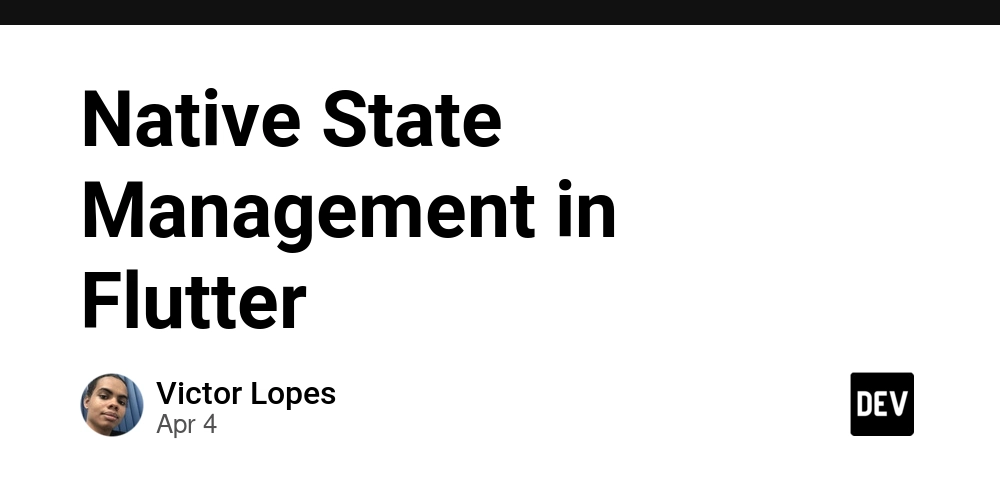


















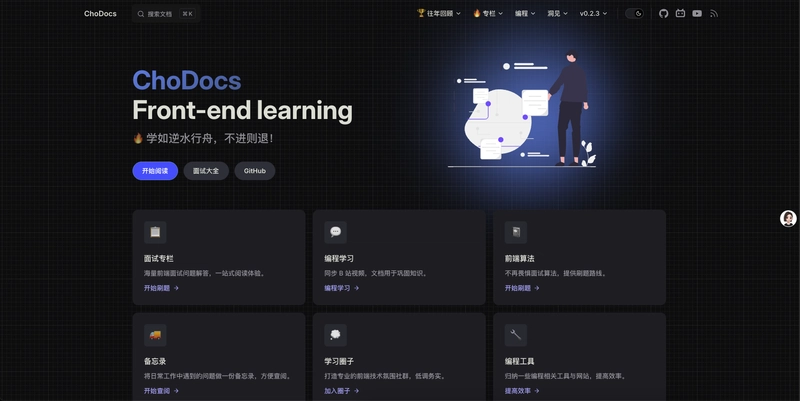










































































































.jpg?#)















































































































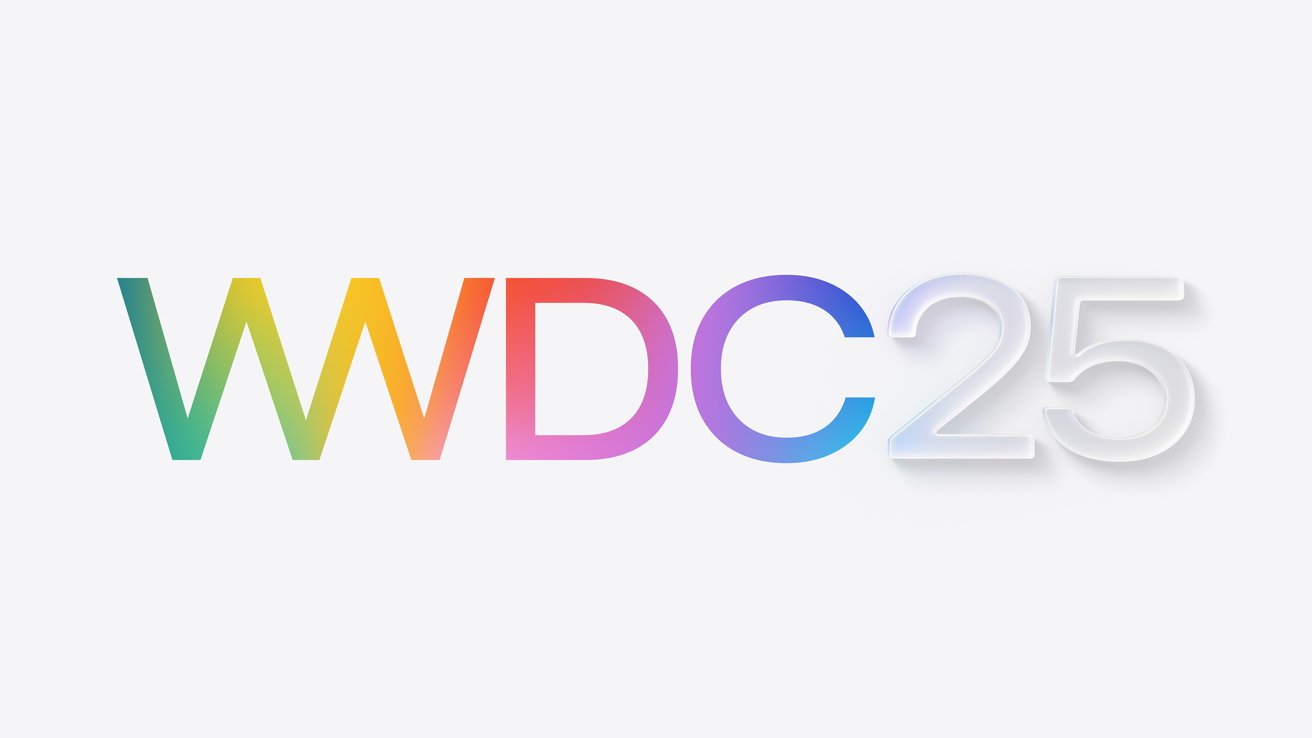




























![YouTube Announces New Creation Tools for Shorts [Video]](https://www.iclarified.com/images/news/96923/96923/96923-640.jpg)

![Apple Faces New Tariffs but Has Options to Soften the Blow [Kuo]](https://www.iclarified.com/images/news/96921/96921/96921-640.jpg)






































































